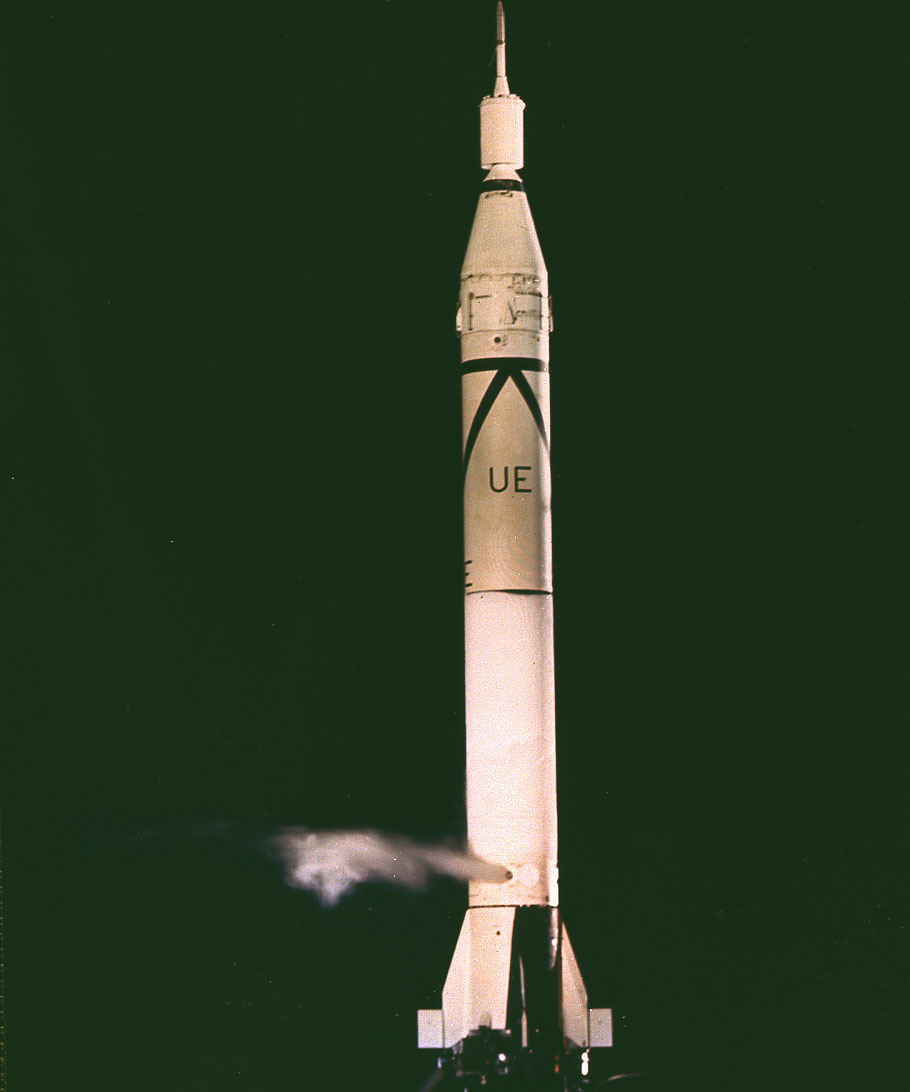
Juno-I
In-active RedstoneChrysler (CHR)
Jan. 31, 1958
Description
The Juno I was a four-stage American booster rocket which launched America's first satellite, Explorer 1 in 1958. A member of thr redstone family, it was derived from the Jupiter-C sounding rocket.
Specifications
-
Stages
4 -
Length
21.2 m -
Diameter
1.78 m -
Fairing Diameter
1.78 m -
Launch Mass
29 T -
Thrust
416 kN
Family
-
Name
Juno-I -
Family
Redstone -
Variant
Juno I -
Alias
― -
Full Name
Juno-I
Payload Capacity
-
Launch Cost
― -
Low Earth Orbit
11 kg -
Geostationary Transfer
Orbit
― -
Direct Geostationary
― -
Sun-Synchronous Capacity
―
Chrysler
Commercial
None
CHR 1950In July 1959, NASA chose the Redstone missile as the basis for the Mercury-Redstone Launch Vehicle to be used for suborbital test flights of the Project Mercury spacecraft. Three unmanned MRLV launch attempts were made between November 1960 and March 1961, two of which were successful. The MRLV successfully launched the chimpanzee Ham, and astronauts Alan Shepard and Gus Grissom on three suborbital flights in January, May and July 1961, respectively.
Juno-I | Beacon
Chrysler | USACape Canaveral, FL, USA
Oct. 23, 1958, 3:21 a.m.
Juno-I | Explorer 5
Chrysler | USACape Canaveral, FL, USA
Aug. 24, 1958, 6:17 a.m.
Juno-I | Explorer 4
Chrysler | USACape Canaveral, FL, USA
July 26, 1958, 3 p.m.
Juno-I | Explorer 3
Chrysler | USACape Canaveral, FL, USA
March 26, 1958, 5:38 p.m.
Juno-I | Explorer 2
Chrysler | USACape Canaveral, FL, USA
March 5, 1958, 6:27 p.m.
Falcon 9
Starlink Group 6-54
Space Launch Complex 40 - Cape Canaveral, FL, USAA batch of 23 satellites for the Starlink mega-constellation - SpaceX's project for space-based Internet communication system.
Falcon 9
Galileo L12 (FOC FM25 & FM27)
Launch Complex 39A - Kennedy Space Center, FL, USATwo satellites for Europe's Galileo navigation system. Originally planned for launch on Soyuz-ST and then Ariane 6 but both were unavailable. Gali…
Long March 2
Shenzhou 18
Launch Area 4 (SLS-1 / 921) - Jiuquan Satellite Launch Center, People's Republic of ChinaSeventh crewed flight to the Chinese space station.
Electron
Beginning Of The Swarm (ACS3 & NeonSat-1)
Rocket Lab Launch Complex 1B - Onenui Station, Mahia Peninsula, New ZealandNASA's Advanced Composite Solar Sail System (ACS3) is a technology demonstration mission tasked with deploying a composite boom solar sail. NeonSa…
Falcon 9
Starlink Group 6-53
Space Launch Complex 40 - Cape Canaveral, FL, USAA batch of 23 satellites for the Starlink mega-constellation - SpaceX's project for space-based Internet communication system.

